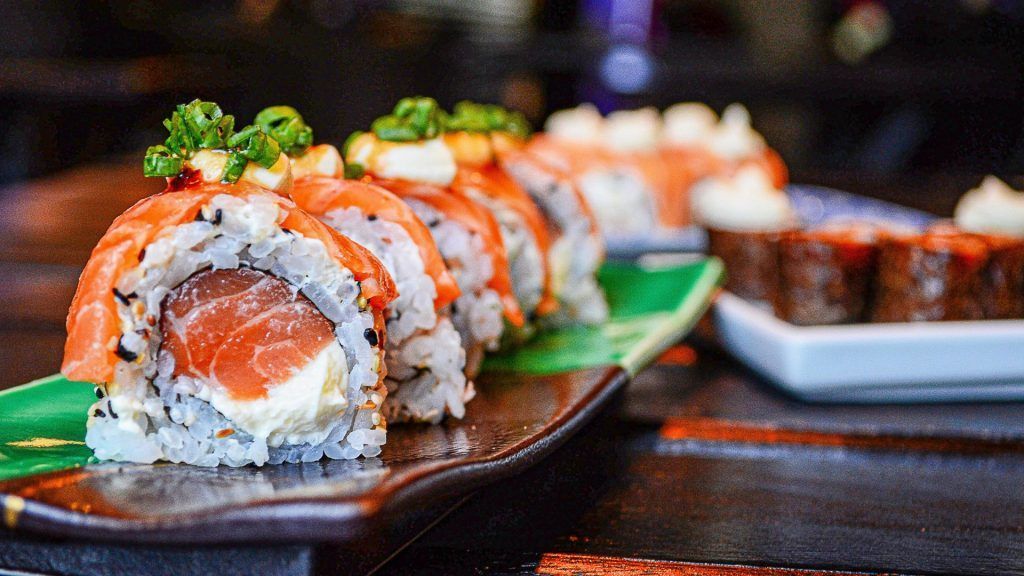
Sushi might be Japan’s greatest gift to lovers of Asian cuisine, and food connoisseurs across the globe would agree. A burst of delicate flavours all rolled up artfully in wholesome goodness is irresistible to seafood lovers. With sushi gaining more and more prominence the world over, hanging out at a sushi bar has become something that delights many. Talking about Japanese cuisine, a dining style that is immensely popular outside the Asian country as well is omakase.
The concept of eating out has evolved over the decades. Now, having just a good meal doesn’t cut it. It needs to be a whole experience to make the outing worth it. Going to a sushi bar was something only a handful of people would do back in the 90s, but we have moved far away from that phenomenon. Now, we are spoilt by a variety of this exotic food. Making the traditional Japanese dining style a more immersive experience is omakase.
But before diving into one of the hottest food trends in the Asian food dining scene currently, let us first understand what sushi is.
All about sushi

The power of a good old sushi platter is undisputed. Often dismissed by a few critics to be ‘raw fish,’ a carefully plated assortment of these delicate rolls has various textures in its layers. First-timers claim that it introduces them to a range of flavours that are enhanced with the sweetness of sticky rice, the dominant fish (eel, squid, octopus or salmon), the spicy kick of wasabi and a lingering zinger, thanks to pickled ginger. Once one gets accustomed to this slightly unconventional dish, there is no turning back.
Over the years, sushi chefs have tried many permutations and combinations to make this dish more acceptable and added their individualistic punch to these versatile rolls. The original sushi roll was quite different from what we get these days.
The origin of sushi can be traced back to the second century BC in the rice fields of, wait for it, China. The concept of fermented rice with salted fish rolled together was predominant in the food scene at that time. What was a plain survival hack for them has now become a culinary rage.
The rice was fermented, and the fish was heavily seasoned with salt to naturally preserve the fresh, raw catch for a longer time. Eventually, people discarded the wad of rice and only consumed the fish.
Though this tradition started in China, Japan deserves all the credit for popularising the dish and taking it into every corner of the world. However, the rice isn’t thrown away; it is artfully rolled together with fish and other condiments.
It was not until the 1960s that this seemingly bespoke dish was introduced in the mainstream USA. Soon, the California sushi roll was invented, and that was a landmark moment in sushi history. More palatable to the American taste, the use of avocado became common in these rolls along with cooking the fish. A lot of other condiments were mixed, matched and changed.
Now, variants of sushi, besides nigiri, like maki (layered rice, vegetables and fish packed in a sheet of sea-weed), its variants temaki and hosomaki along with sashimi are savoured by foodies across the world.
Unpacking the Omakase dining experience

While sushi is the dish you enjoy, omakase is the experience you cherish for a lifetime. Traditionally, sushi was not served in a à la carte style. And it was not available on the menu. Omakase is for sushi connoisseurs who are willing to push the limit when it comes to being open to tasting this bite-sized bomb of flavours along with some other signature Japanese items. Omakase is a short form of ‘omakase shimasu,’ which means ‘I trust you.’
The customer puts his money on the chef solely trusting him to appease his taste buds. In omakase dining, there is no menu presented to the guest. Every course is a surprise. The chef goes with the flow, gauging his customer while working in real-time to dish out one delicacy after another.
Omakase menus became a rage in the 1990s when sushi travelled to the West from Japan. While consuming raw fish was a pet peeve for some, they loved the crunchy tempura, flavourful soups and sauces from the cuisine. Omakase menus were invented so that sushi could be had with an accompaniment of beverages, soups and appetisers — all according to the chef’s recommendations. Seasonal fish is used, and the menu is mainly decided depending on the catch of the day. This is exciting, and guests know for sure that they will get a bang for their buck owing to the freshness of the fish and seasonal ingredients used.

This dining style worked well in the case of newbies as it took off the pressure of knowing their seafood to place the perfect order. Since everything is entrusted to the chef, people can immerse themselves in the whole experience rather than worrying about what would be suitable for their palette.
Omakase, as a concept, is now not just limited to sushi but people in Japan have incorporated it into bar menus where the bartender makes cocktails of their own choice to get the customer in good spirits.
In a typical omakase experience, a party of guests are seated at the sushi table and then the chef starts presenting them with courses, working continuously all the while engaging them in a conversation and commentary.
The guest is presented with a bill at the end of the meal, which can be on the higher side; unless the guests and chef work at a pre-decided base price. Restaurants have also started the concept of mini omakase, which is basically a tasting menu for novices. An omakase menu can start at USD 100.
When in doubt, omakase your eat-out; make your reservation now!

Want to indulge in the ultra-luxe, sumptuous world of omakase dining? Here are a few of the best places offering this indulgence from around the world.
Matsuhisa, USA
If you love to mix and match, then Matsuhisa, which opened way back in 1987 in Los Angeles, is the go-to place for you. Peruvian-inspired sushi is a hit here.
Matsuhisa, 129 N La Cienega Blvd Beverly Hills, California 90211, Phone: 310-659-9639
Ginza Sushi-Ichi, Bangkok
The Michelin-starred restaurant boasts authentic taste, as the key ingredients are all imported from Tokyo. It is a branch of yet another famous omakase restaurant by the same name in Tokyo.
999 Gaysorn Center, 3 Flr. Ploenchit Rd, Lumpini, Pathumwan, Bangkok Thailand, Phone: +662-250-0014
Sushi Masato, Bangkok
Michelin-star restaurant Sushi Masato is known for its delectable, exotic and rare types of seafood and meat, specially sourced from the markets of Tokyo by world-renowned sushi chef Masato Shimizu.
3/22 Soi Sawasdee 1, Sukhumvit 31, Khlongtoei Nua, Wattana, Bangkok 10110, Phone: +669-7234-1370
Takeda, New York
Located on the Upper West Side, Chef Yukihiro Takeda’s restaurant is highly rated for its lavish Edomae-style menu.
566 Amsterdam Ave, New York, NY 10024, Between 87th ST & 88th ST, Phone: (646)370-6965
Hashida Sushi, Singapore
This dining place has over 20 years of legacy and has newly appointed a specialised omakase chef, Kazuya Nishino, to wow sushi lovers across the world.
77 Amoy St, 01-01, Singapore 069896, Phone: +65 8129 5336
Get in touch with your adventurous side with omakase

Want to eat your heart out at an omakase meal but don’t know what to expect? Here are some videos to titillate your taste buds.
Pricey yet totally worth the experience, omakase is a must-try for anyone who wants to explore Japanese cuisine beyond sushi. A sushi roll comprises only a small segment of what the omakase dining experience is all about. Entrusting your omakase chef to give you food memories will be the best decision you will ever make.
Shop the best travel experiences here
Currency conversions were done at the time of writing.
This story first appeared here.
(Main image credit: Mahmoud Fawzy/Unsplash; Featured image credit: Thomas Marban/Unsplash)
Related: Find The Most Expensive Sushi Meals At These Places Around The World












